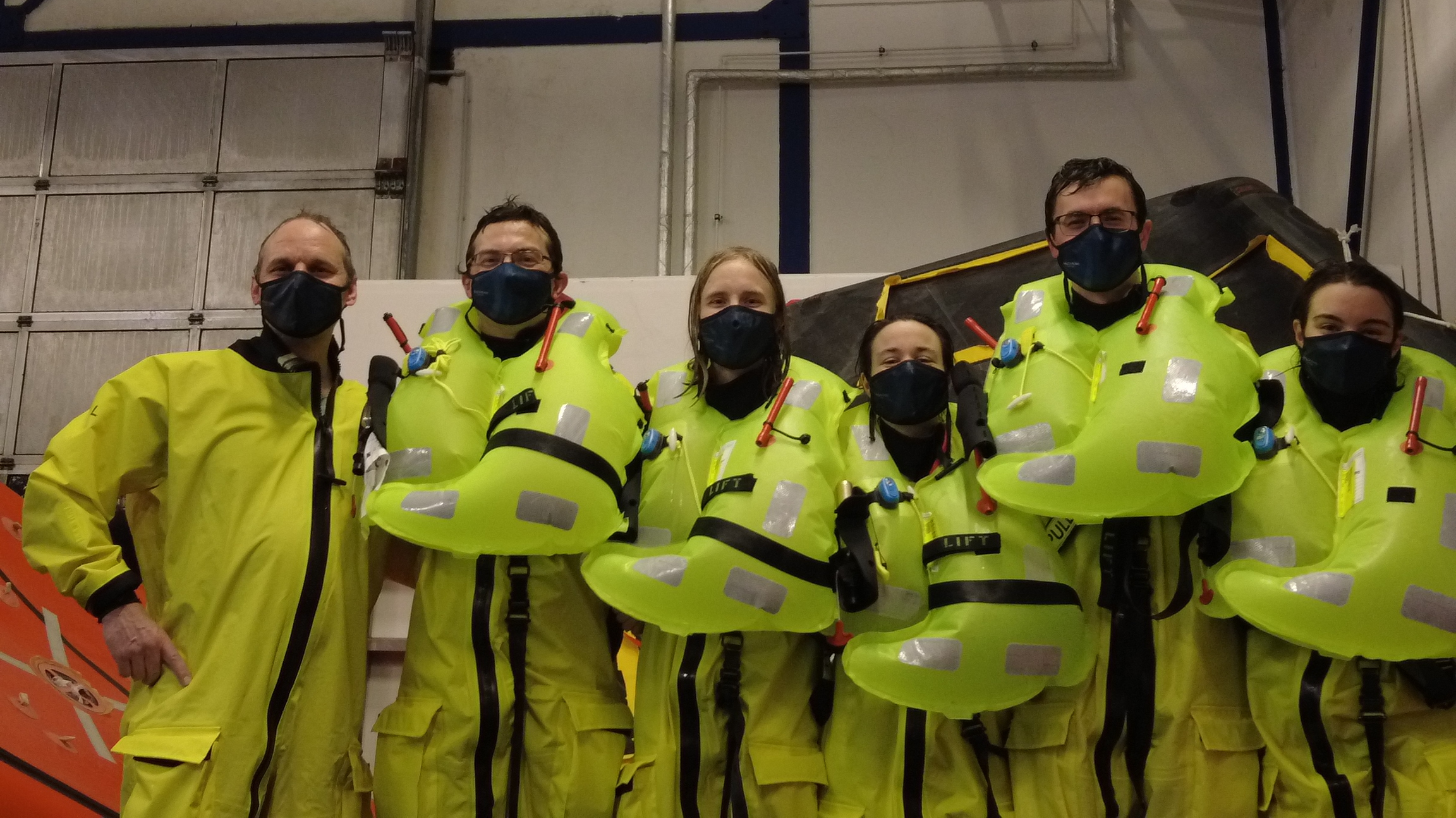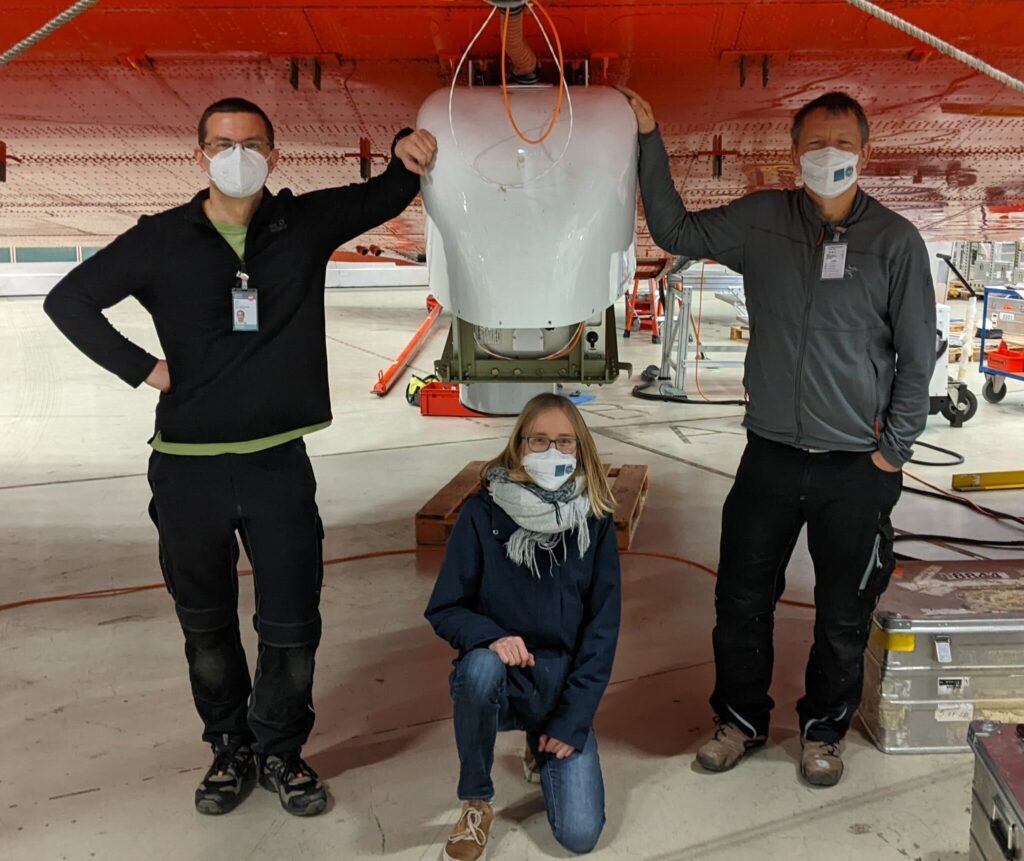Part of preparing for a climate study in the Arctic involves preparing for polar bear emergencies. Blog followers will ask themselves: wait, but aren‘t we flying? Yes! But…safety training includes polar bear protection, as emergency landing on the ice is (an unlikely) possibility.

The ice is the home of the polar bears. Bears are very curious, and extraordinarily well adjusted to the Arctic environment. For a polar bear, a group of scientists means a great opportunity for some extra dinner. So even though many of us are faced by comments around „You‘re going to the Arctic: I hope you will see a polar bear“ we actually really want to avoid seeing one (other than from the plane).
But you never know, so better to prepare for the emergency case. This is why 6 of us spent a day at AWI Bremerhaven to learn about polar bears and their behaviors. We learned how to avoid meeting a bear, how to scare bears (hint: they don‘t like loud noises, including banging on cooking pots), and what to do when you see one from far away. For the troubling worst-case scenario of a bear attack, we were also trained on how to handle a rifle.
Insights from the group include: rifles are surprisingly heavy; we were lucky to have Arctic-like wind conditions as storm „Ylenia“ was passing the Bremerhaven area during our training; and fingers crossed for spotting a bear from the air!
#AC3 #funding #ArcticAmplification (AC)3 AISAM Arctic Atacama Atmospheric boundary layer AWI Bremenhaven AWIPEV AWIPEW CFMIP-GASS climate cloud radar cloud radars clouds COST gender gap GEWEX HALO HALO-(AC)³ HAMAG HATPRO hyperarid ITCZ JOYRAD94 Kölnische Rundschau Maria S. Merian MiRAC-A model intercomparison Ny-Ålesund outreach Polar 5 Polar 6 PolarStern Precipitation PROBE COST Action radiosondes STEM STEMM Svalbard tropical convection videodocumentary Water Vapor Wetoo Winter school women in science
From: Sabrina Schnitt


